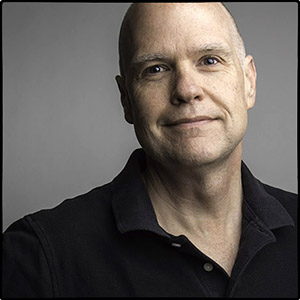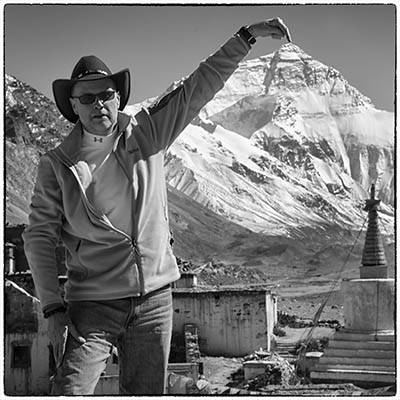吉姆 JIM HOFMAN | Photography Faces & places in China
About me
 During the course of my industrial design career, various business trips have allowed me to travel to many parts of the world that ordinarily I would have never seen. My profession has made the planet very small for me. Nearly all of my travel over the last 35+ years has been to China, where I’ve enjoyed the culture, food, landscapes, and wonderful people. I’ve witnessed the transformation of Shenzhen from a sleepy fishing village into the “Workshop of the World”. Napoleon once said: “Let China sleep; when she wakes she will shake the world.” I’ve been privileged to have ring-side seats to the awakening and felt the shaking.
During the course of my industrial design career, various business trips have allowed me to travel to many parts of the world that ordinarily I would have never seen. My profession has made the planet very small for me. Nearly all of my travel over the last 35+ years has been to China, where I’ve enjoyed the culture, food, landscapes, and wonderful people. I’ve witnessed the transformation of Shenzhen from a sleepy fishing village into the “Workshop of the World”. Napoleon once said: “Let China sleep; when she wakes she will shake the world.” I’ve been privileged to have ring-side seats to the awakening and felt the shaking.
I moved to China permanently in March of 2024 and now live in Ningbo – about 2 hours south of Shanghai. I have a film-developing lab set up in my kitchen and a Nikon film scanner for 35mm film. I can turn around a roll of film in about 3 hours.
I was very active in photography while in high school & college, but took a 25-year hiatus after graduation (marriage / kids / job – you know…). I had dabbled in photography for the last 10 years and had accumulated some interesting shots, but I was taking photos as a tourist. Lots of pretty postcard photos.
I “rejoined” the world of photography several years ago for an unlikely reason. For my daughter’s eighteenth birthday, she requested that I paint something for her. I had experimented with “impressionist” style painting for a short period after college and enjoyed it. As I began her new painting I quickly realized I wasn’t going to have the free time to finish the painting to my liking (I’m borderline OCD). As I stood there staring at the photograph I was painting I came to the realization that I really enjoyed taking photos – and NOT painting them. The instant gratification of capturing a moment in time was what I was looking for. I never finished the painting but instead began investing in photo gear to re-embrace the passion I enjoyed as a youth. This has become my creative “outlet”. I’ve also built a home studio so I can experiment with portraiture when I’m not in China.
Most of the photos on this blog are a combination of “street photography” and documentary photography. I used quotes around “street photography” because there are about 200 different definitions for this genre of photography and even more “rules” that people seem to want to apply. I choose to ignore the rules and jump back-and-forth between the two styles. This work-in-process provides an opportunity for me to share my photos from China with anyone interested. Some people may be interested in the photos from a travelogue perspective, and others for the photographic experience.
This photography blog / portfolio project also filled a void left in my life after my (ex) wife left our marriage.
Gear:
I used Canon equipment in my early photography days (ie high school & college).
Beginning in early 2016 I began using Fuji mirrorless gear on the street (X-Pro2 & X-T3 + 16mm & 56mm and the Mitakon 35mm f0.95 lens). I had used all Nikon gear for many years, but now the big DSLR and huge lenses are only used in the studio. The Fuji gear is much smaller, lighter and much more discrete. The images created by the Fuji sensor and glass are absolutely amazing.
Edit: At the end of 2019 I decided to get back to my roots and start shooting film again. I bought an old Nikon F2 35mm camera and ran a roll of Tri-X through it. Then I suddenly remembered the chunky grain in 35mm film. I quickly checked Ebay to see how much medium format cameras cost. That began a steady stream of old cameras being delivered to my doorstep. I have a fairly large collection of analog cameras now – including a Hasselblad 500 C/M and a couple Mamiya medium format cameras (6 & 7). I only shoot medium format now. The image sharpness is amazing on my favorite Portra 400 & Ilford HP5 film stocks. I published two photography books in 2020 & 2021 that consisted entirely of analog medium format photos. I develop all of my own film (color and B&W) and use my Fuji X-T3 to scan the negatives into Adobe Lightroom. It’s a seamless process that allows me to see my photos the same day I take them. Instant gratification.
Chinese:
One of the obvious questions that people ask me is – do you speak Chinese? Well… I pick up one or two new words on every trip, so I’m up to about 100 words. Just enough to order dinner in a restaurant. Luckily there are a lot of good translation programs available for the iPhone.
EDIT: 11.15.12 – I just started Chinese language lessons last week. It’s time to see if this old dog can learn any new tricks. I should have done this 20 years ago, but who knew I would still be making the commute to China.
EDIT: 1.28.16 – I’ve officially given up learning Chinese.
Ancient History:
I would be remiss if I didn’t acknowledge my first photography mentor. Dick Stevens was my photography professor at Notre Dame in the late ’70s. He taught me a lot of things about photography and life in general. He taught me that once you perfect your technology & craft – the rest was art, and there were no rules to art. He challenged me to stretch my creativity in a place that wasn’t very right-brained. Professor Stevens was a pretty easy-going guy and didn’t scare me like a lot of other professors at Notre Dame. He also arranged my first private photography studio at Notre Dame – in a large lead-lined room that had housed ND’s first nuclear accelerator. I was told it was “clean”, but I’ve always wondered why they were so fast to allow a single art student get access to that amazing space for a photography studio. Weird. They tore down the building the next year. Anyway I set-up a great college studio with a seamless backdrop / 4″ x 5″ camera / lights / color darkroom / bar. Yeah, that was a popular studio…
Note about the images on this website:
Image Quality: I’ve intentionally reduced the JPEG image quality to approximately 60% of the base value. This may help reduce the number of “poachers” that may be tempted to re-purpose these images without permission or copyright acknowledgment. Minimizing the photo quality also reduces the image’s file size and load time for each page.
Watermarks: I refuse to put huge watermarks on my photos. It’s like a dog peeing on something to mark his territory. The territory smells like pee afterward.
Please contact me if you’re interested in purchasing or using any of these photos – jim@hofmanphotos.com Some of the photos are also available through Getty Images.
Published Articles:
Petapixel – Street Photography in China
Petapixel – Searching for a Trophy Buck in Street Photography






4 Responses to About me